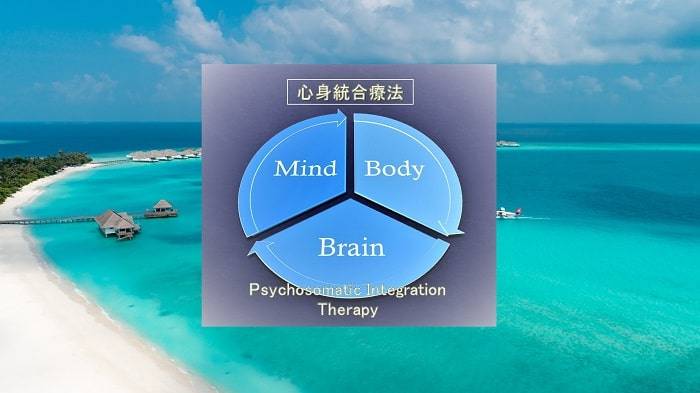
今から数年前、日本の民放が「腰痛・肩こりは癌の赤信号!」と銘打った番組を放送しました。このような情報は一般の人々に誤ったイメージを抱かせる危険があります。
この番組では癌を患った人々のアンケート結果をもとにして、腰痛・肩こりは癌の赤信号だと結論づけていたのですが、この論旨には重大な誤りがあります。
腰痛・肩こりをもっている人が癌を患った場合、たしかに痛みが強くなる傾向は認められますが、一般的な腰痛・肩こりの99%は癌ではありません。
腰痛・肩こりが癌の赤信号だとする結論は“数字のマジック”です。確率の計算方法に誤りがあるのです。
母集団を癌患者に設定して、腰痛・肩こりの頻度を求めてしまうと、無視できない数字として現れてきます。もともと体調に何らかの異変が現れてしかるべきハイリスク集団を対象にしているのですから、ある意味当然の結果といえます。
しかし、そうではなく、この番組の題名(趣旨)にしたがえば、腰痛・肩こりの中に癌が潜んでいる確率を求めるのが筋というものです。

この場合であれば、母集団を腰痛・肩こりの患者さんに設定して、癌の罹患率を計算しなければなりません。すると、その数字は1%以下ということになります(既に癌の治療を受けている人、及び癌治療中の骨転移などによる痛みは含みません)。
たとえばアメリカの公立病院で行った調査では、腰痛で来院した1975名中、13名が癌による痛みだったと報告されています。これは腰痛だけのデータですが、0.66%という数字になります。

当会所属のクリニックの調査では、過去3年間に来院した腰痛・肩こりの患者さんのうち、癌が判明した確率は0.8%でした。
つまり腰痛・肩こりの患者さんが1000人いたとすれば、そのうち癌が判明する人は8人です。この数字から「腰痛・肩こりは癌の赤信号」などといえるでしょうか。筆者なら次のように説明します。
『癌を患った人々が経験する体調異変のなかには、腰痛・肩こりが含まれます。しかし、腰痛・肩こりで医療機関を受診する患者さんのなかに、癌が見つかる頻度は1%以下です。
したがって、腰痛・肩こりの99%は癌とは関係ありません。ただし、寝汗を伴う強い夜間痛が3週間以上続く人、日中の耐え難い安静時痛が数時間以上続く人、理由の見当たらない体重減少が顕著な人、癌の既往歴のある人はより精密な検査を受けるべきです』
【注:医療センターや大学病院で同様の統計を出せば、その数字は1%を超えるかもしれませんが、これは一般論として採用しにくい数字です。重症例が集まる場所では統計的に偏りが出てしまうからです。また、腰痛・肩こりがあったとしても、医療機関を受診しない人もいますので、そういった人たちを母集団に設定した場合も、数字は変わってくるかもしれません】
少し話は逸れますが、「手術の成功率は80%です」と言われたとき、あなたなら何を考えますか?「高い成功率だ」と安心する人、「失敗する確率が20%もあるのか」と心配する人など反応はさまざまでしょうが、実はこうした「…%」という表現には気をつけなければならないことがあります。
確率を計算するときの分母が分からないケースがあるからです。この場合でいえば、誰が行った手術の成績なのかはっきりしません。分母が「執刀医個人」による数字なのか、それとも「病院全体」なのか分かりません。場合によっては「学会」が発表した数字ということもあり得ます。
分母に設定したものが何であるかによって、「80%」の意味が違ってきてしまうのです。
ちなみに筆者が患者の立場なら、執刀医自身の数字それも何%という確率の表示ではなく、何人の患者を手術して、そのうち何人が成功したという自然頻度の数字を知りたいですね。

こうした確率や統計の考え方はむつかしいものですが、情報を発信する立場の人はきちんと勉強しておく必要があるでしょうし、受け取る側もそのような知識は持っていたほうがいいと思います。
興味のある方は、Gerd Gigerenzer氏が著した「Calculated Risks」という本がたいへん参考になるでしょう。日本では「数字に弱いあなたの驚くほど危険な生活―病院や裁判で統計にだまされないために」という邦題で、早川書房から出版されています。
ところで、日本語においては、主語の下に来る「は」と「が」の使い分けがよく問題になります。昔、三上章という日本語学者が自著「象は鼻が長い」において、「わたしは…」の「は」は、「わたしに関して言えば…」という意味だと解説しておられました。
つまり「わたし」という主語に関する説明がそのあとの文章に続くのが、日本語における「は」の正しい使い方だというのです。「象は鼻が長い」というのが正解であって、「象が鼻が長い」とは言わないわけです。
例のテレビ番組が大きなテロップに出した「腰痛・肩こりは癌の赤信号」という日本語を考えた時、「腰痛・肩こりに関して言えば、癌の赤信号」という意味になりますので、その根拠となる統計を出すためには、前述したとおり母集団すなわち分母は当然「腰痛・肩こりの患者さん」でなければならないわけです。
腰痛・肩こりと癌の関係を扱うのであれば、視聴者に余計な不安を与えぬよう、より慎重な表現を心がけるべきではないでしょうか。
一般に腰痛・肩こりに代表される運動器の問題は、レントゲンやMRIによる画像検査によって診断されていますが、その根底を揺るがす重大な事実関係が判明しています。次回はその話(EBMについて)をさせていただきます。
認知科学統合アプローチ(COSIA)に興味のある方へ
画像ラベリングと痛みの原因診断が乖離する現状において、世界疼痛学会(IASP)は痛みの定義を改訂し、「痛みの感情起源説」にシフトしています。
COSIAに興味のある方は是非一度「医療者・セラピスト専用サイト」にお越しください。貴殿のご参画をお待ちしております。


